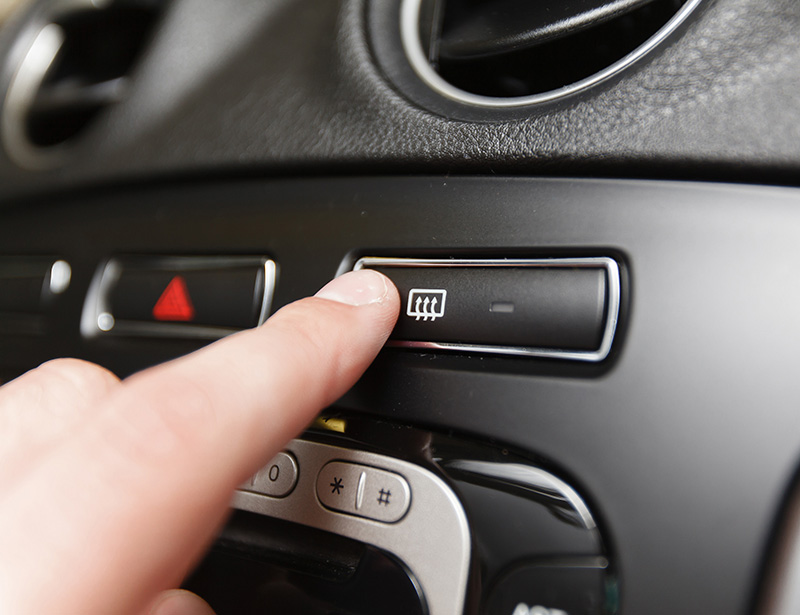|
As temperatures drop, a vehicle’s heating and defrosting systems transition from conveniences to critical components of safe driving. Beyond maintaining cabin comfort, these systems play a direct role in keeping glass surfaces clear of frost, ice, and condensation. When they operate properly, the result is a warm cabin and unobstructed visibility. When they don’t, drivers face delays, impaired sightlines, and potential breakdowns. Fall is the season to confirm that everything is functioning as intended, before winter conditions expose weaknesses.
How the System Works
The heating system relies on the vehicle’s engine coolant. Once the engine reaches operating temperature, coolant circulates through the heater core—a small radiator located inside the dashboard. A blower motor pushes air across the heater core, delivering warm air through the cabin vents and onto the windshield when the defroster setting is selected. This same warm, dry airflow is what clears condensation and frost from the glass.
Rear windows and mirrors often use a different approach. Electrical heating elements embedded in the glass or mirror surface activate at the press of a button, warming the surface evenly and quickly. These systems depend on intact wiring, functional switches, and stable electrical connections. Together, both systems ensure the driver maintains visibility in challenging conditions, while also regulating cabin comfort.

Why Fall is the Right Time
Checking the heater and defroster in autumn ensures that coolant levels and strength are adequate for freeze protection, that the thermostat and water pump are circulating coolant properly, and that the blower motor delivers consistent airflow. It also confirms that electrical defrost elements in the rear glass and mirrors are operating correctly. Servicing these systems now prevents drivers from discovering faults on the first frosty morning, when solutions are harder to arrange and delays are far more inconvenient.
Warning Signs That Shouldn’t Be Ignored
Problems with these systems often reveal themselves gradually. Drivers may notice that the cabin takes longer to warm up, or that condensation on the windshield lingers even when the defroster is engaged. Airflow may weaken over time, sometimes accompanied by unusual noises from the blower motor. A faint sweet smell inside the cabin can indicate a coolant leak from the heater core. In some cases, the rear defrost grid clears unevenly or fails altogether. Each of these signs suggests an underlying issue that will only worsen once colder weather sets in.
The Benefits of Preventative Service
Proactive inspection and maintenance in the fall ensures that heat is delivered quickly, windows clear efficiently, and the cooling system continues to protect the engine from extreme temperatures. It also reduces the likelihood of costly mid-winter repairs and provides peace of mind that the vehicle is ready for the demands of the season. Addressing small issues early—whether it’s a worn blower resistor, a weak thermostat, or a failing electrical connection—ensures safety, comfort, and reliability in the months ahead.
Book Your Appointment Today
Dependable heat and clear windows are essential for winter driving. A professional inspection this fall verifies that both mechanical and electrical components of the system are working as designed. Click the button below to book your service appointment and prepare your vehicle for safe, comfortable, and worry-free driving this winter.
|